Home >
Matabeleland South >
The historic and world-renowned Cyrene Mission and its Chapel face the threat of an illegal settler invasion
The historic and world-renowned Cyrene Mission and its Chapel face the threat of an illegal settler invasion
Introduction
The following information has been taken from the school website and newspaper / article sites, including Wikipedia although the photos were taken by the author.
Cyrene High School faces an illegal settler invasion
Peter Matika reported on 13 October 2025 in a comprehensive, but alarming newspaper report that the historic Anglican Church-run institution “faces an escalating crisis after illegal settlers invaded its farm, stripping the land of its resources, threatening the school's livestock, infrastructure, and the safety of learners.”
“What began as a small encroachment in 2019, just before the Covid-19 pandemic, has now spiralled into full-scale occupation. The once-thriving school farm, which for decades sustained the institution through cattle ranching and crop production, is now a shadow of its former self, overrun by settlers who have cleared pastures, felled trees, and vandalised water systems.”[1]
The High School's deputy Headmaster and Chaplain, Reverend Mthulisi Mvubu was quoted as saying, “the invasion has crippled the school's farming operations and left the institution grappling with a severe shortage of grazing land. We had a herd of about 400 cattle, but we've been forced to downscale to 200 because there's simply no grazing land left. The settlers have taken over the paddocks and our livestock now compete with theirs for the little grass that remains..stock theft has now become rampant."
Reverend Mvubu continued, “The encroachment has turned what was once a peaceful learning environment into a zone of uncertainty. Learners and staff live in fear, as incidents of vandalism, stock theft, and suspected drug peddling rise sharply.
The settlers are so daring that they have drilled boreholes right next to ours and even cut off our water supply to divert it for their livestock. It's a security crisis and we've had to restrict learner movement and lock certain access points to keep them safe. The environmental toll is equally alarming. Large portions of the school's grazing land have been cleared for makeshift homesteads, while the institution's orchard has been destroyed through deforestation. The depletion of pasture has forced the school to buy stock feed, driving up operating costs and threatening the viability of its agricultural training programmes.”
Reverend Mvubu concluded, "Cyrene Mission has always been known for its self-sustaining farm and its contribution to agricultural education. Now, that legacy is under serious threat. Parents are also growing increasingly anxious about their children's safety, leading to a noticeable decline in enrolment. Plans to expand the school into a mixed institution have stalled, as the land earmarked for girls' dormitories has been occupied by the settlers.”
This is indeed a grave situation that the authorities need to investigate urgently before lasting damage is done to this world-renowned institution.
History of Cyrene High School
The Chapel is located at Cyrene Mission within the complex of the currently boys-only Cyrene High School situated at Westacre, 32 KM from Bulawayo in the Bulalima District on the A7 national road to Plumtree. The idea of forming Cyrene Mission began in 1936, when John Banks donated two farms, Collaton and Irene, including a large house, to the Anglican Diocese of Southern Rhodesia. Under Bishop Edward F. Paget, two projects were launched: St. Pancras Home, a rehabilitation centre for delinquent white boys and Cyrene Mission, a skills-oriented primary school for African boys.[2]
St Pancras Home was established first, but soon closed, and after Canon Paterson’s arrival in 1939, the emphasis was put on developing the school. Paterson changed the mission’s name to CYRENE (sigh REE nee) the North African home of Simon, who helped Jesus carry the cross at Jesus’ crucifixion. The school opened in January 1940. As there was then no restriction on the age at which a boy might start or complete his primary education, many of the students were young men in their teens and twenties.
The boys studied the usual academic subjects. Agriculture, vegetable gardening and cattle management were also part of the curriculum. Carpentry, metal-work and building were also taught and traditional wood-working produced bowls, adze handles, stools and spoons.
Activities were not confined to art, but as the school developed, so did the students’ ability to express themselves in two or three-dimensional art forms. Paterson’s own enthusiasm for arts and crafts was caught by many of the students and first one, then others, were given the privilege of painting his interpretation of Biblical scenes on the chapel walls. He did not so much teach painting. But “encouraged art” and wanted their paintings to come from their own ideas and imagination. Few of his pupils had seen a picture book. “Father Paterson would send us away to think. Then he told us to come back and paint our think.” Thus was born what some have called the CYRENE tradition in art – an art which grows out of the life and culture of those who produce it and during the first twenty years of the life of the school developed a distinctive style that was truly indigenous and unaffected by the influence of western art.
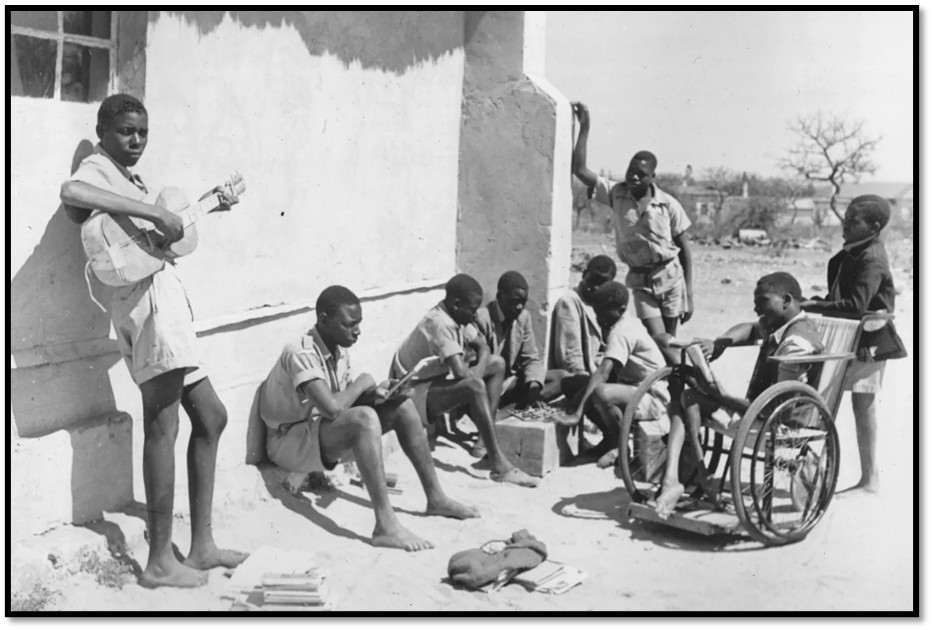
Cyrene Mission went on to produce many black artists, scholars, teachers and practitioners. These included Adomech Moyo, who became the first African teacher of occupational therapy in southern Africa. While William Mariwi became a highly praised artist of religious iconography and Richard Rachidi the first qualified black art teacher in his home country, Malawi.
To supply a spiritual focus for these projects, the chapel was built in 1937. Paterson prepared a new altar for the chapel and painted a black Christ, dressed as an Anglican priest, on the wall behind the altar.
Cyrene Mission was the first time in Southern Rhodesia (present-day Zimbabwe) that Africans were given training in painting as Paterson was convinced that only the lack of access had prevented Africans from reaching the same standards as European artists.
Cyrene Mission became famous for its localised art of Christian content which was developed first in the classrooms and then extended to decorate the chapel. The chapel is covered in mural paintings with a Christian theme. Former student Stanley Musa Nyahwa once said: "Ned taught us to accept ourselves as we are, and other people as they are. He showed he was convinced on the value of human life. He had an air of reverence for the value of human life which made him, for us, a man apart."
In 1944, four years after the school opened, an exhibition was held in Bulawayo and then in South Africa that was acclaimed with great success. In 1946, 120 large pictures, a large carved chest, furniture, decorated bowls and small carvings in wood and stone went on display in Bulawayo’s City Hall. Many people of all races crowded in to see it before the exhibition moved to Salisbury (present-day Harare) Johannesburg and Cape Town.
During the 1940’s and ’50’s Cyrene students produced an abundance of paintings and carvings that brought them world renown. Their work was exhibited in London and South Africa, and the royal visitors to the then Southern Rhodesia in 1947 included Cyrene on their itineraries. King George VI, Queen Elizabeth, later the Queen Mother and the princesses spent a morning at Cyrene and were presented with a carved blanket chest and several paintings.
A year later 210 water=colour drawings, wood carvings, bowls and three school scrap-books of classroom paintings were sent to London and exhibited at the Royal Watercolour Society galleries.
Eventually a number of Rhodesia's first professional African artists emerged from Cyrene. These included Sam Songo, Lazarus Khumalo, and Kingsley Sambo.
Cyrene High School continues to develop
Following Canon Paterson’s departure, Cyrene developed into a Form 1-4 secondary school for boys, thanks mainly to 22 years of leadership supplied by Canon Robin A. Ewbank although during the Liberation War the school was forced to move to Bulawayo in 1978. The mission properties were taken over by the Rhodesian army and renamed Fort Godwin.
Following Zimbabwe’s independence in 1980, the school returned to its former site to begin a process of rebuilding and development under the guidance of Father Neil D. Pierce, Principal since 1982.
Today Cyrene is a boarding school with some 500 Form 1-6 students from all over Zimbabwe. It has a high academic reputation, but the curriculum still stresses the importance of ‘education with production,’ especially in agriculture.
Cyrene Mission Chapel
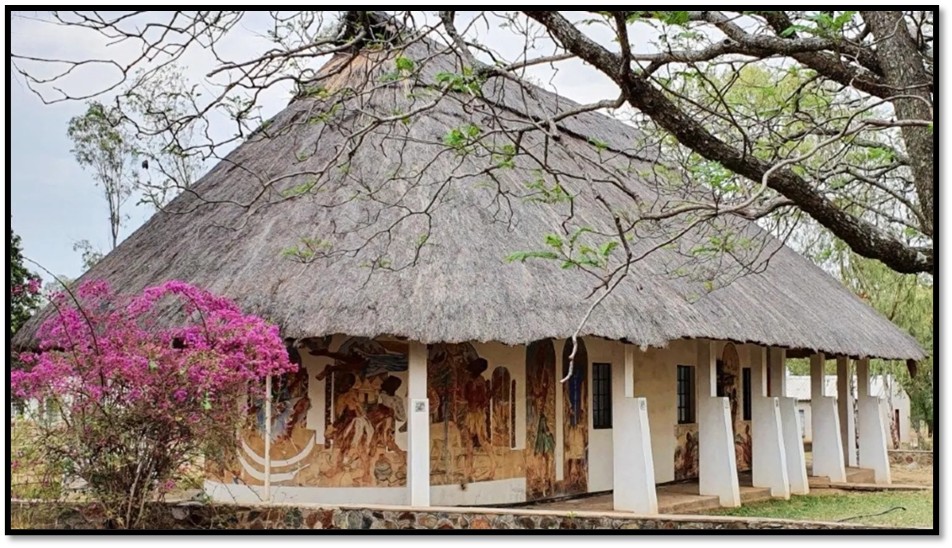
Cyrene Mission Chapel from the east
The chapel remains as a living memorial of an earlier era. Its many murals mirror the artists’ environment, with Matobo rocks and rural kraals in the background. They are unique, and visitors come from all over the world to view them.
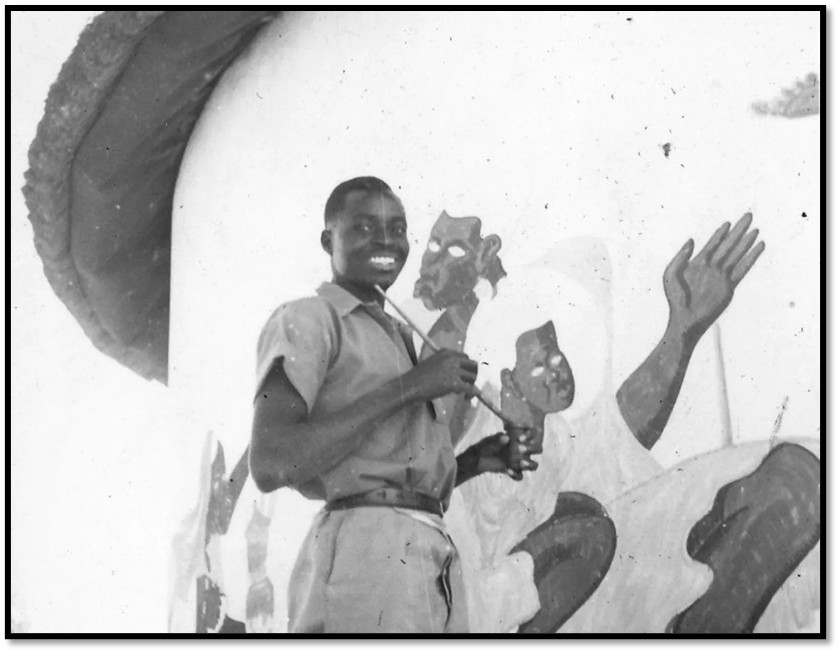
Livingstone Sango, seen above painting a mural at Cyrene Mission in the 1940’s, became a prominent taxidermist with the National Museum in Bulawayo.
The chapel was declared a National Monument in 1987. However, it is much more than a monument. Mass is celebrated here daily, and during school holidays a small congregation meets each Sunday morning for worship.
In short, the chapel continues to play a central role in the life of Cyrene Mission. It is a place where God meets people and where people are given inspiration and direction to carry out their Christian mission.
The Murals of the Chapel
The outside wall of the chapel has images of black angels
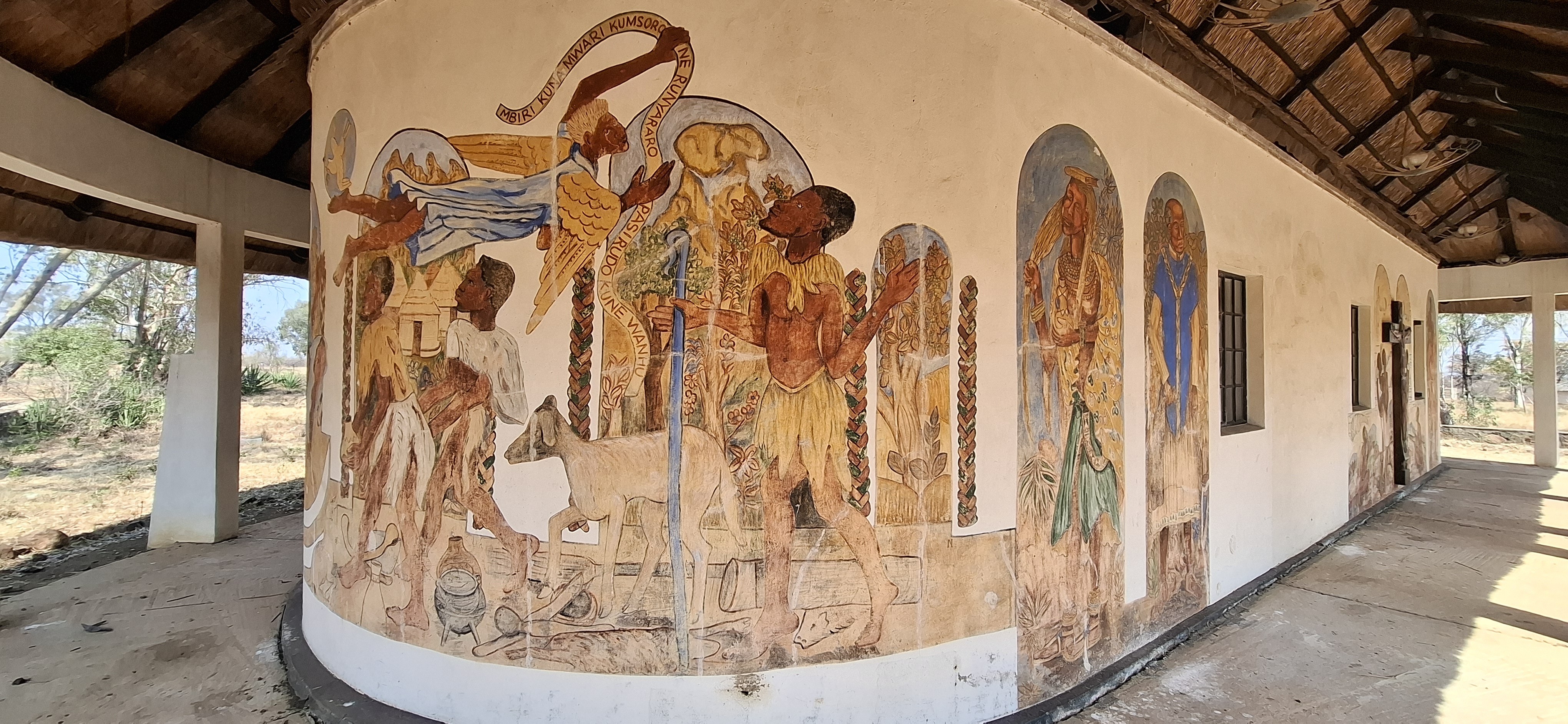
Exterior from the East
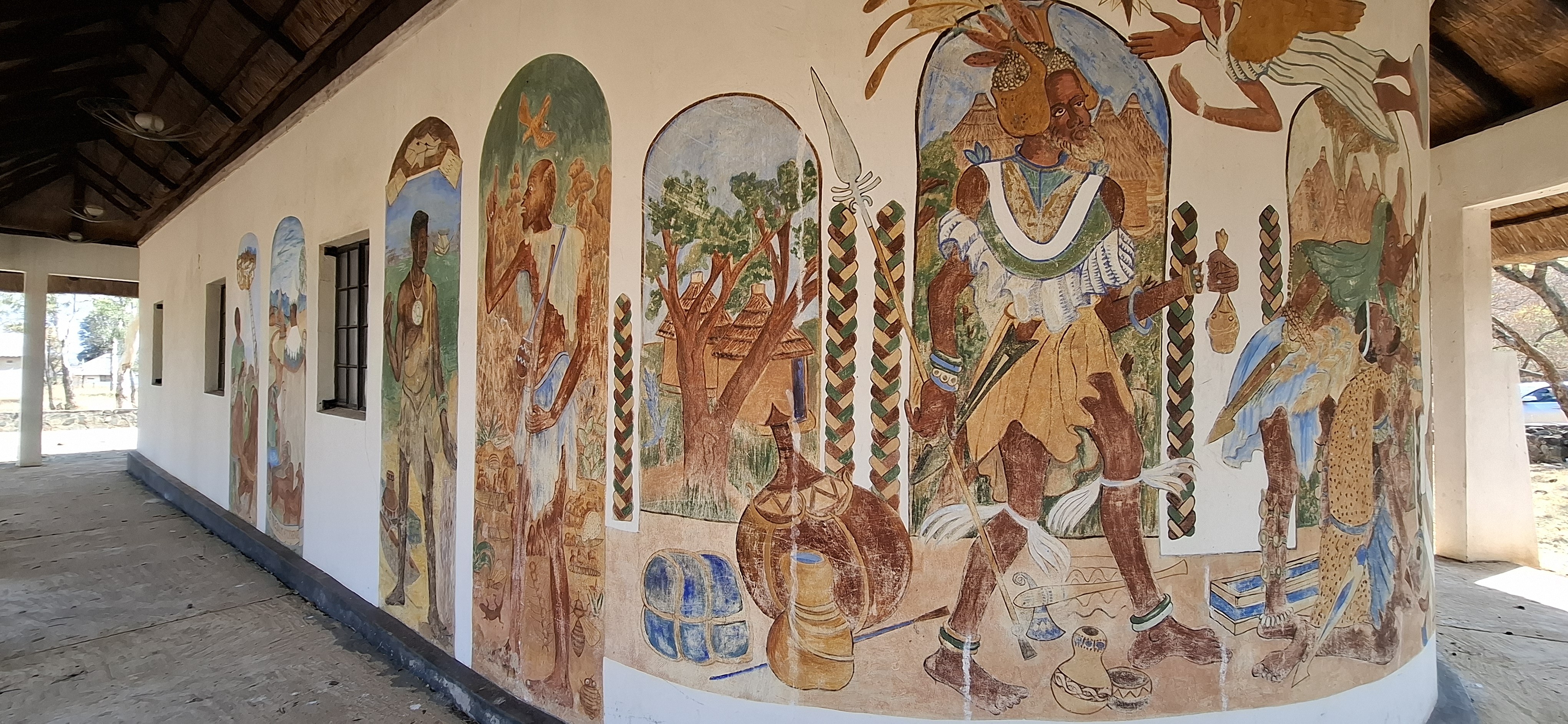
Exterior from the South
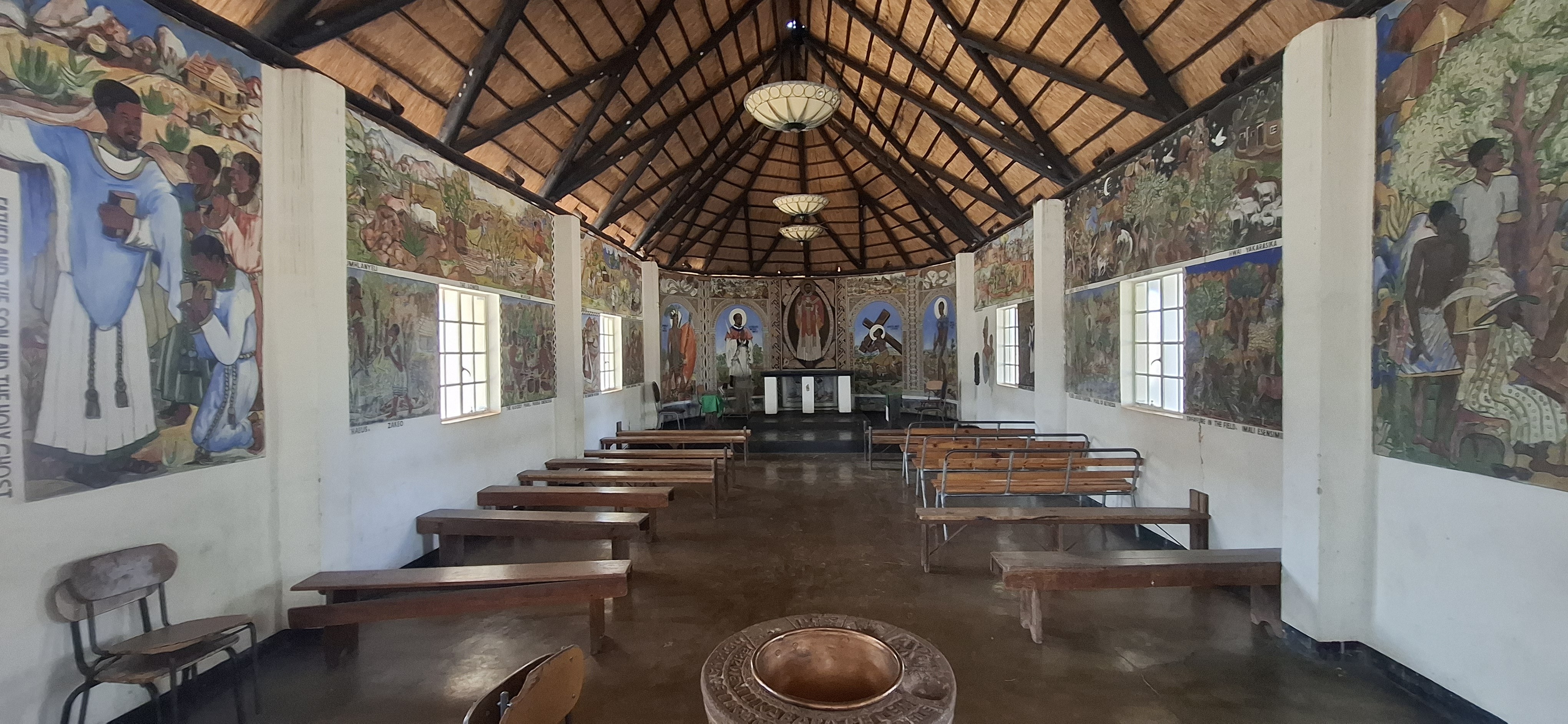
Interior towards the altar
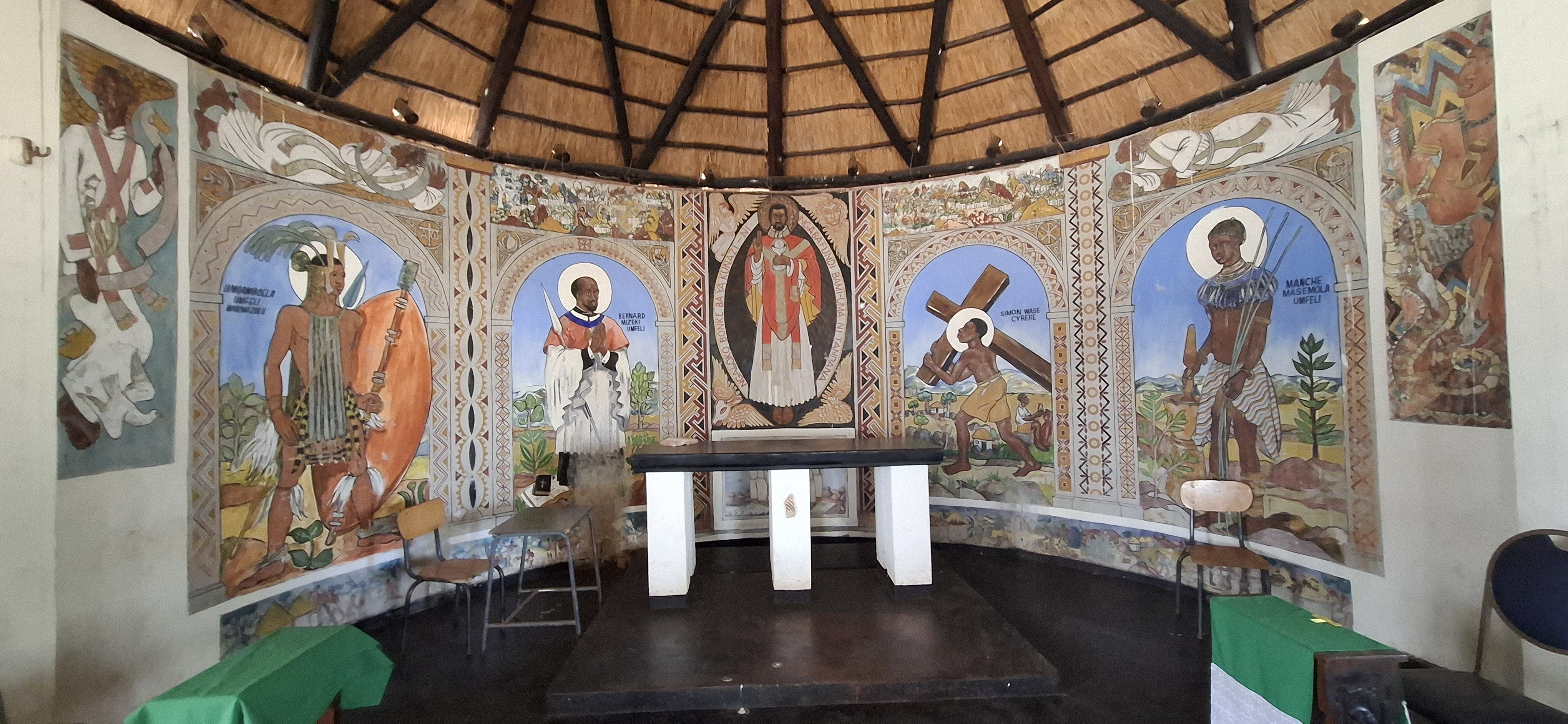
Close-up of the Altar
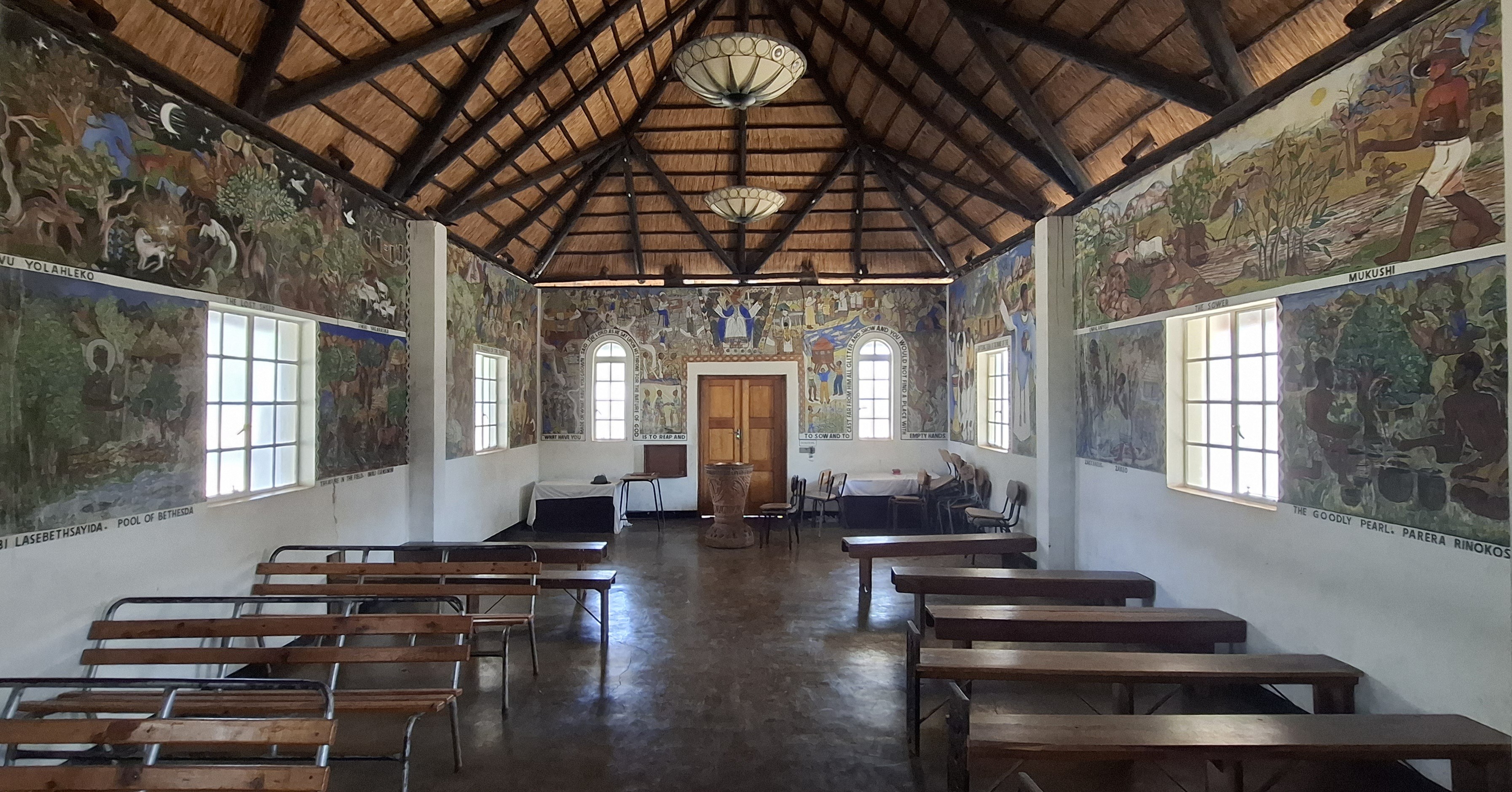
Interior towards the entrance
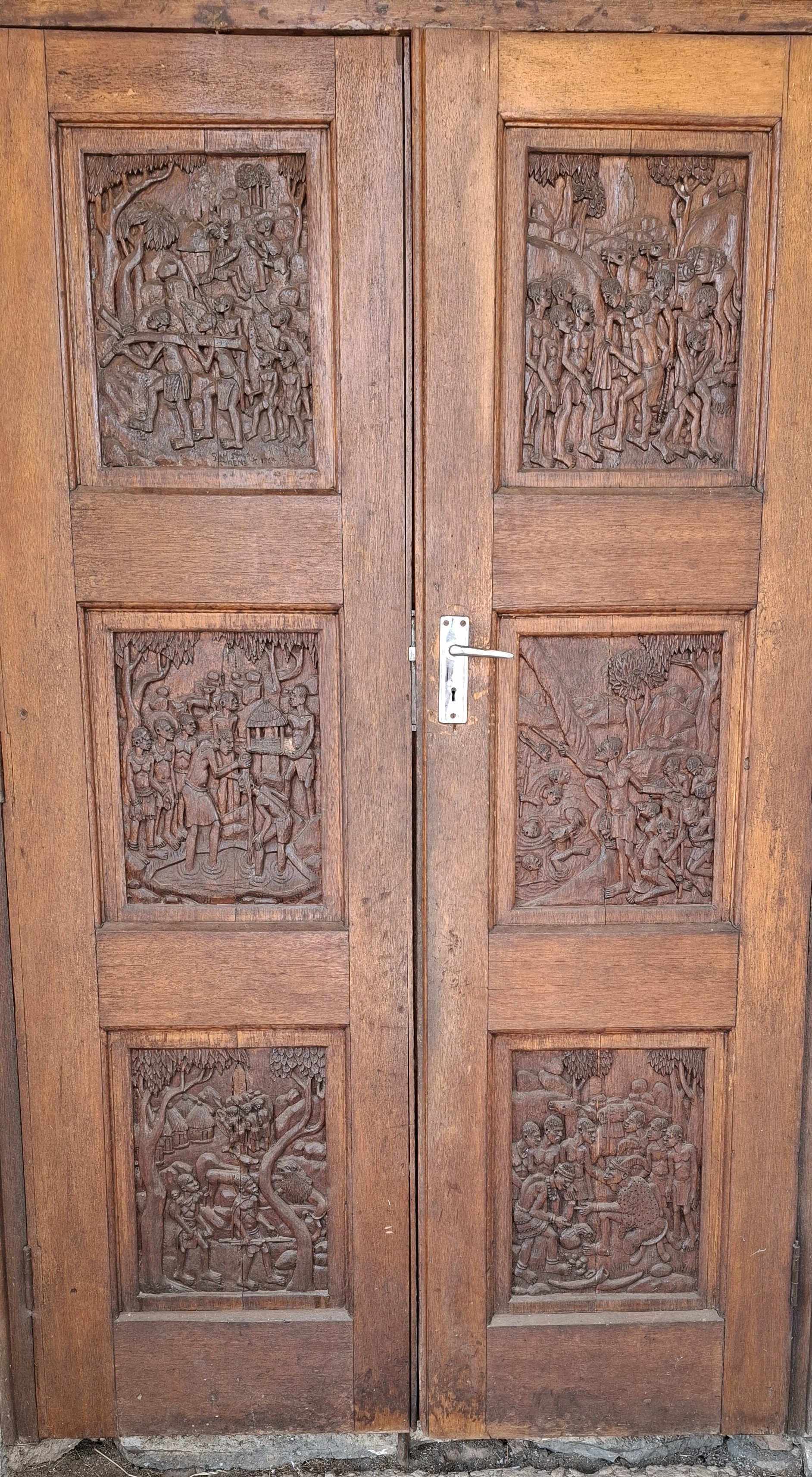
Entrance to the Chapel
At the west end of the Chapel there is a mural of the Last Judgement. The Lord holds in his hand an adze and a mealie cob. Across the length of the wall are the words, “What have you made or what have you grown? said the Lord as he sat upon his throne. For the nature of God is to reap and to sow and to cast far from him all glitter and show and you would not find a place with empty hands.”
Inside, above the altar, is a mural of a black Jesus - something that would have been considered hugely controversial by the white community in the 1940’s.
To the right of the altar is Simon of Cyrene, who carried the cross of Jesus in the Biblical account.
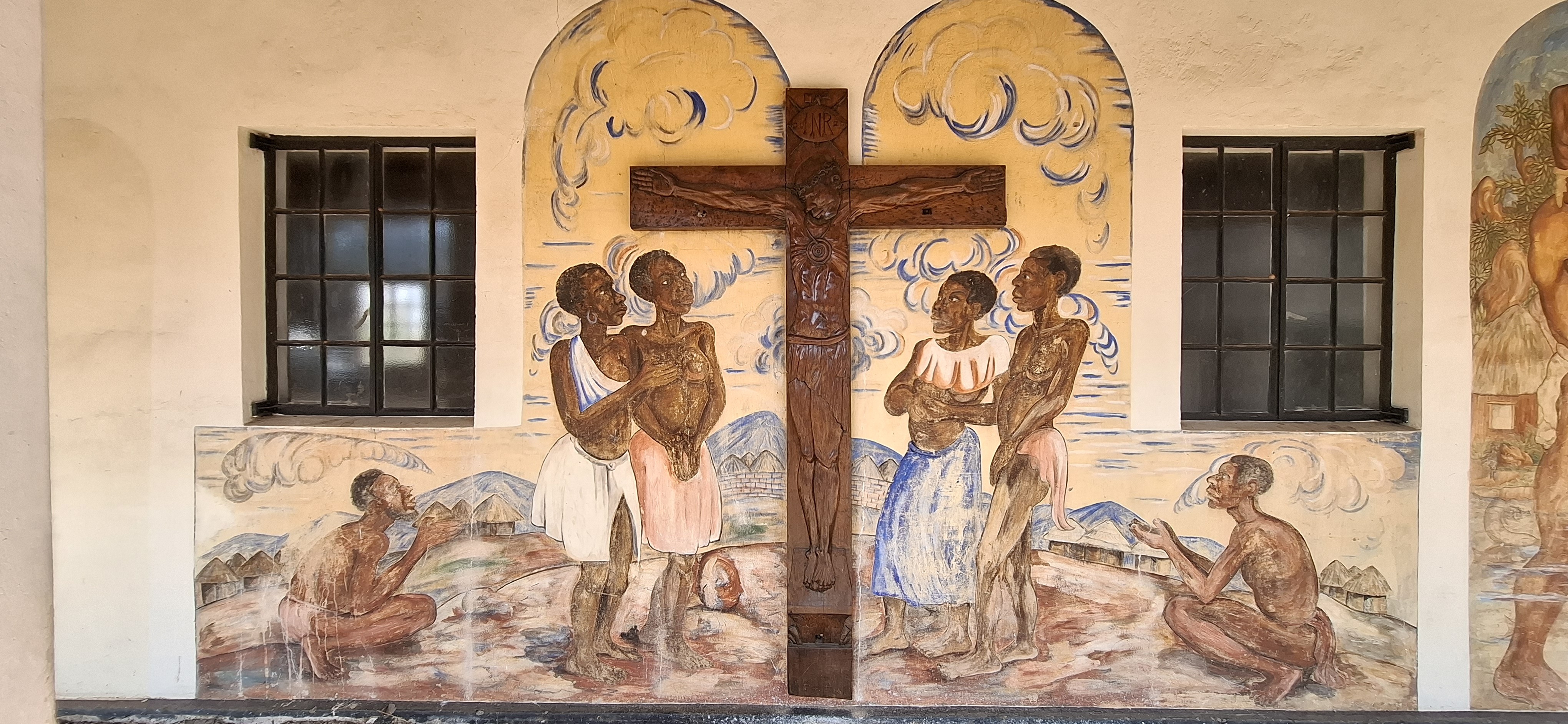
Mary at the Crucifixion at Golgotha outside Jerusalem
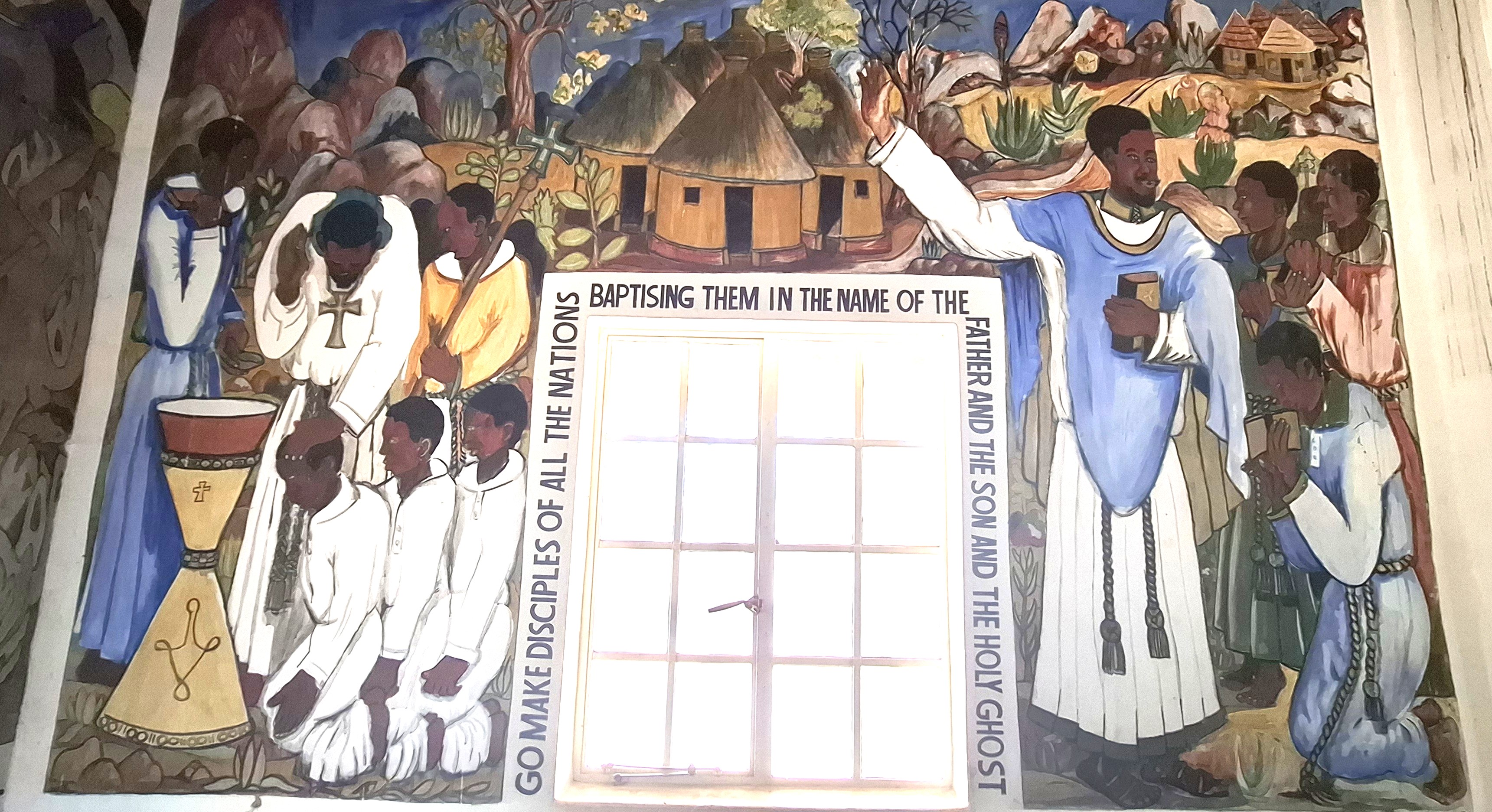
Baptising Christian converts
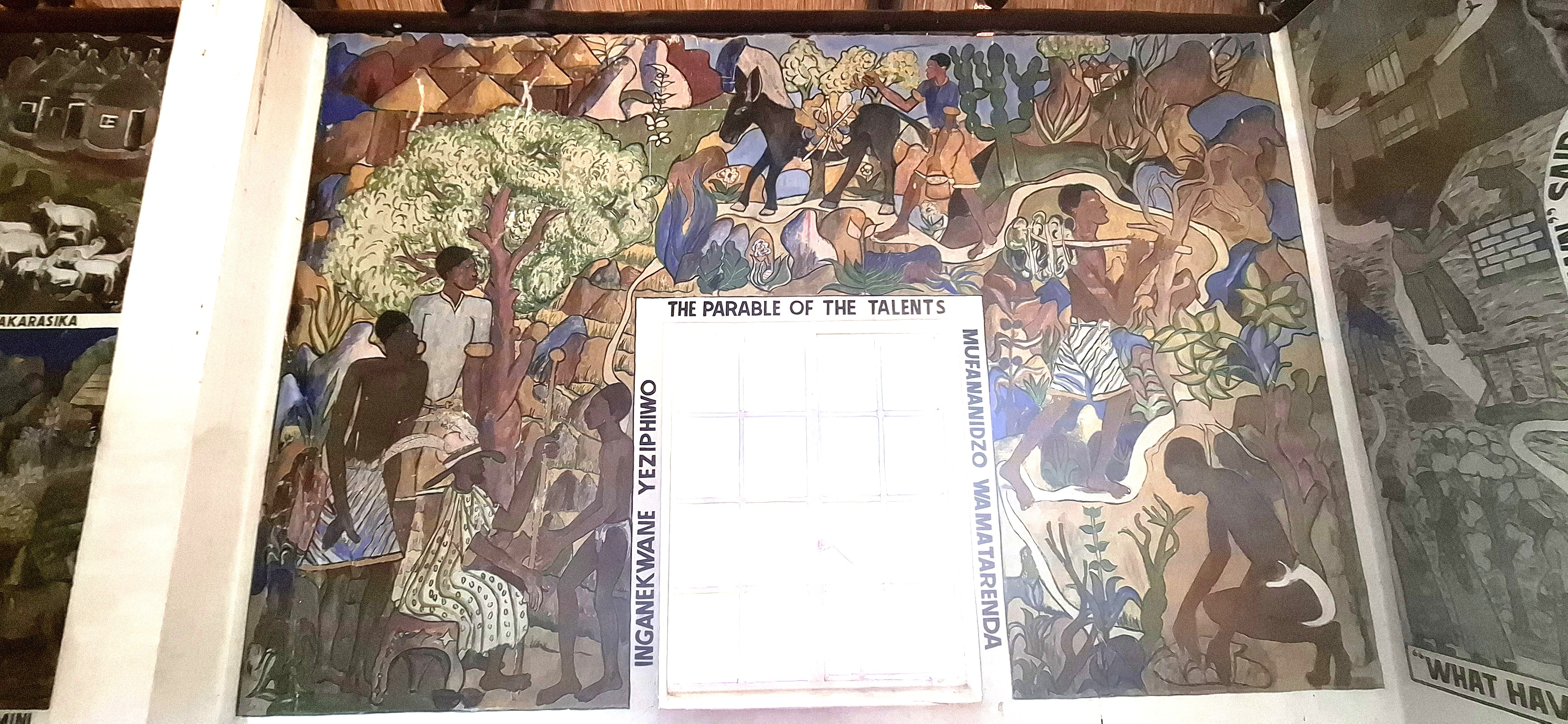
The parable of the Talents
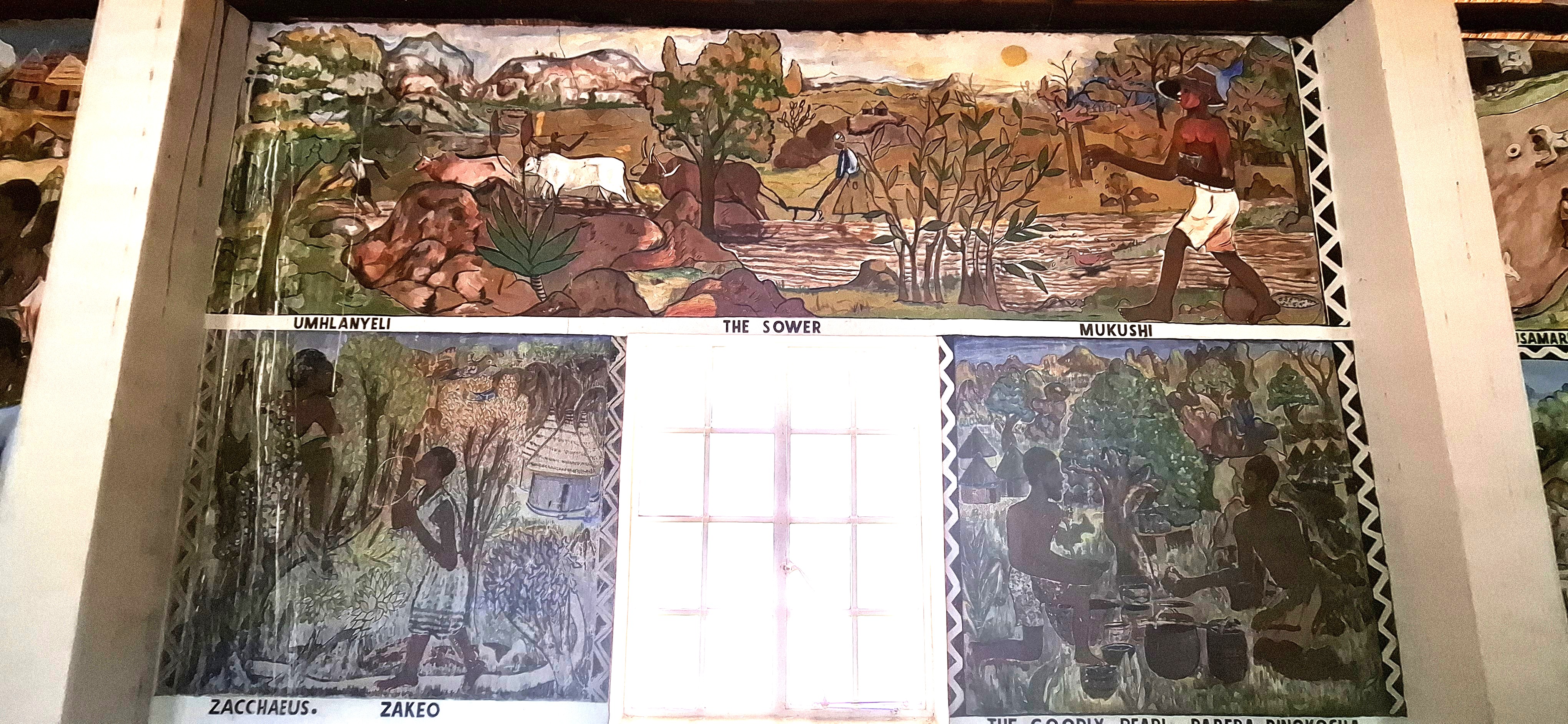
The Sower
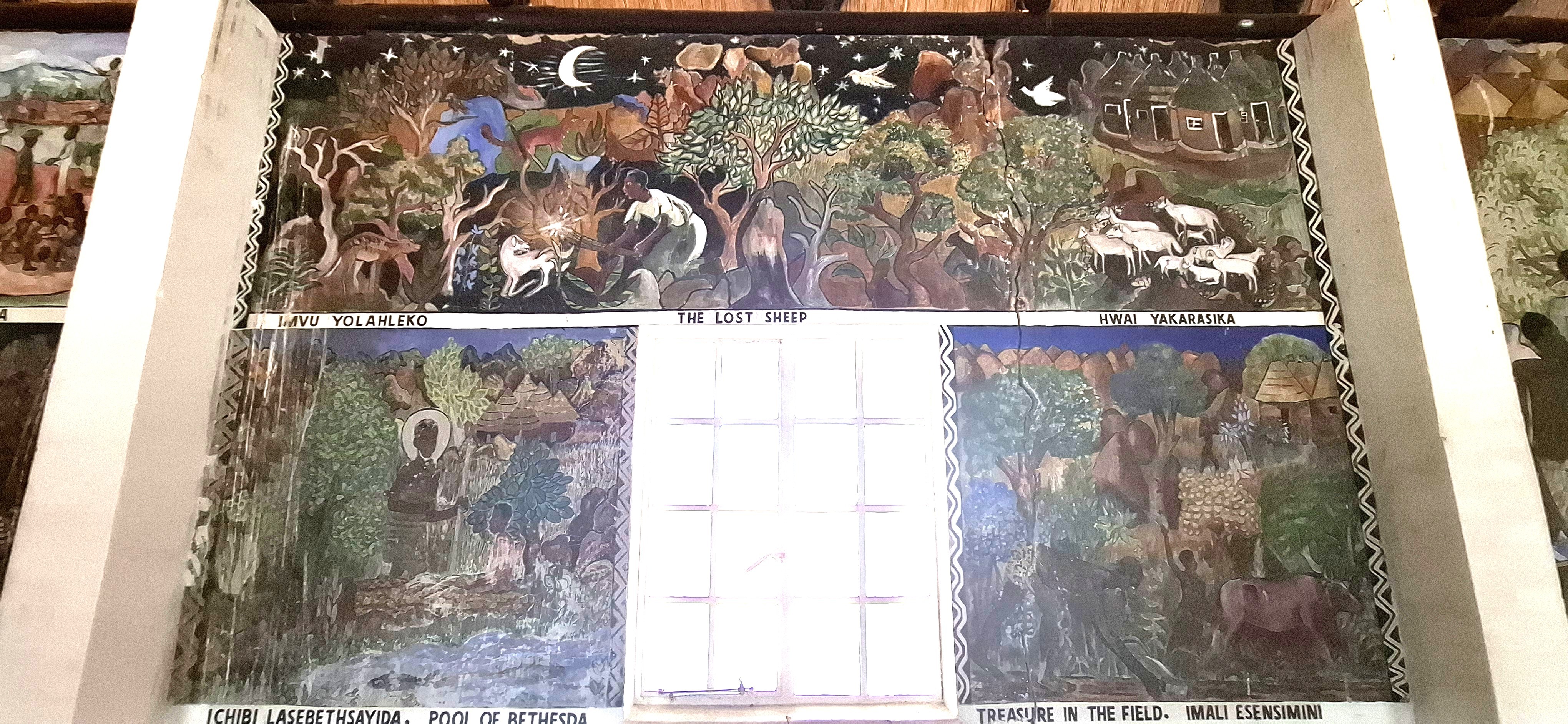
The lost sheep
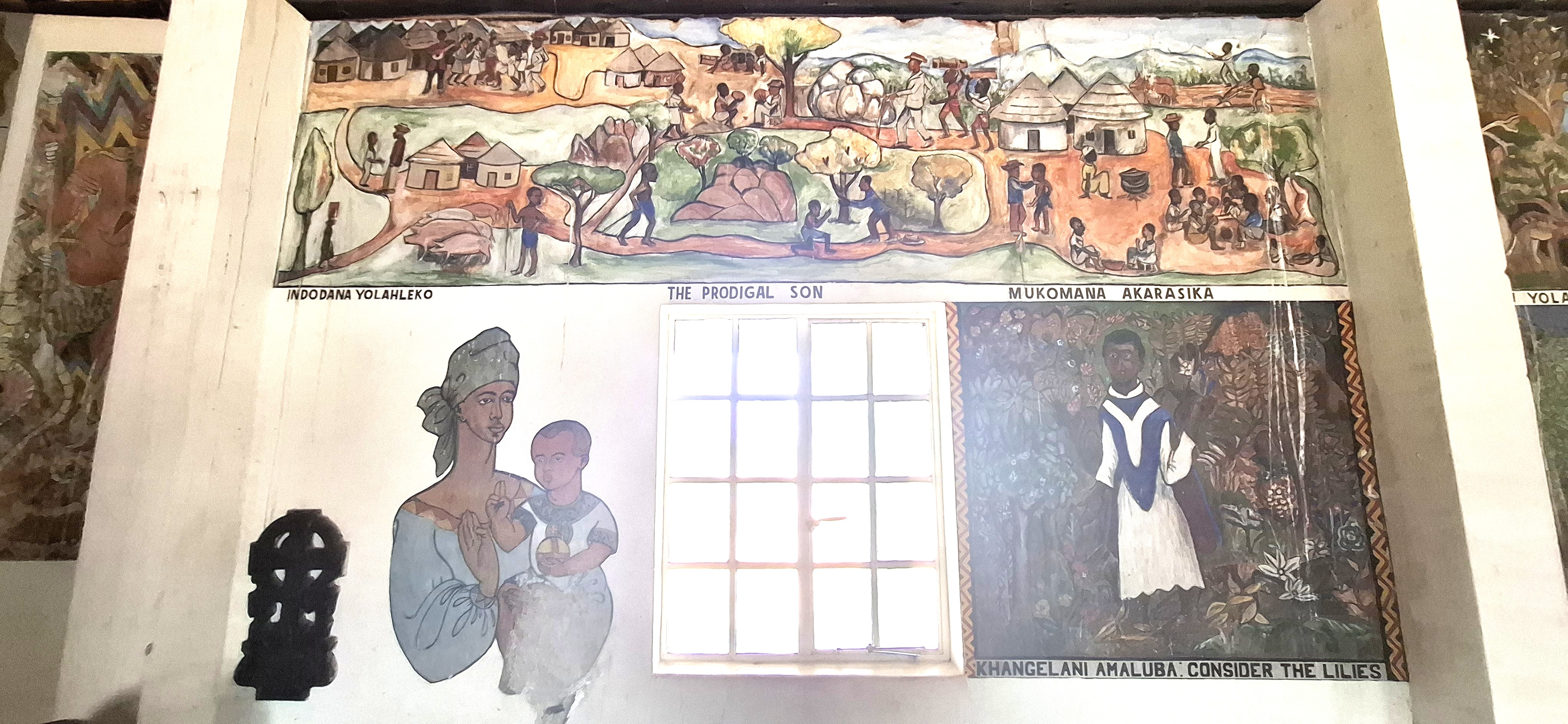
The Prodigal Son
National Gallery Exhibition
In 2022 the National Gallery in Harare featured the works of the students at Cyrene Mission. The paintings toured Europe and the USA from 1947 until 1953 and were then lost in storage at a church in London. In 1978 they were discovered and later bought by a private collector in the UK. Zimbabweans could now view The Stars Are Bright Exhibition for themselves at the National Gallery.[3]
Steve Vickers writes, “Students were encouraged to paint through their own eyes, rather than to imitate European art, and to connect with their landscapes and reimagine local myths and Biblical narratives as they saw them. It was a revolutionary concept at the time - when the country was called Southern Rhodesia, after British colonialist Cecil Rhodes, and was under the control of a white minority, with laws that discriminated against black people.”
Voti Thebe, an expert in Cyrene Mission art writes, "This was 40 years before the country's independence, and there was no segregation at Cyrene Mission. The students were encouraged to fill the whole canvas with broad brushwork and translate Western Christian themes into distinctive African imagery.”
Broadcaster Leander Kandiero, the son of artist Caxton Kandiero, said it was amazing to see the exhibition and explained how Cyrene Mission changed his father's life when he started there aged nine. "He would get into trouble with his teacher because he liked to draw rather than write, so his parents sent him to Cyrene Mission, and he learnt taxidermy there as well as painting."
Canon Paterson – his life (1895 – 1974)
Canon Edward ‘Ned’ Paterson founded Cyrene School. He introduced the arts and crafts style to the African pupils having studied at the Central School of Arts and Crafts in London with an army scholarship.[4] Although he possessed a great love of art, he wasn’t sufficiently talented to become a full-time artist, so he went to South Africa, joined the Transvaal diocese of the Anglican church in 1924, and completed his religious training in 1928 when he was ordained as a deacon.[5]
Early years
In 1925 he was transferred to Grace Dieu, an Anglican high school for Africans near Pietersburg (present-day Polokwane) a school that also taught carpentry and drawing. He introduced the students to bas relief carving, which he had learned in art school. It soon became the school's trademark style and was continued by a nun called Sister Pauline after Paterson's departure. The students began producing religious carvings on commission for churches needing furniture and ecclesiastical objects. Paterson produced many of the designs used in the workshop that the students made into wood carvings.
From 1928-1938 Paterson worked in Sophiatown (Johannesburg) and Potchefstroom (North-West Province) where he helped decorate a number of new Anglican churches in his diocese with murals and carvings. In 1933 Paterson married Mary Phillips, with whom he would have four children.
Cyrene Mission (1939 – 1953)
In 1939 he was put in charge of the newly formed Cyrene School, near Bulawayo in Southern Rhodesia. The school concentrated on practical and agricultural education, but unusually art was on the curriculum and all students attended and took painting and drawing classes. He said, "Our aim is to turn out the self-contained burger type, able to farm rationally and to care for his cattle, able to build his own home and to make its furniture and even to enrich them by carving and design." He set up an afternoon arts workshop that included disabled students unable to take part in sports or construction. They were taught to carve, sculpt and produce linocut prints.
In order to finance his art classes Paterson began to sell his carver’s work and by 1944 their work was selling well. By 1947 the school’s reputation was such that King George VI and his entourage visited Cyrene Mission. The resulting publicity encouraged Cyrene tours of South Africa, England and the United States regularly from 1949-1953, raising money for the school’s art classes.
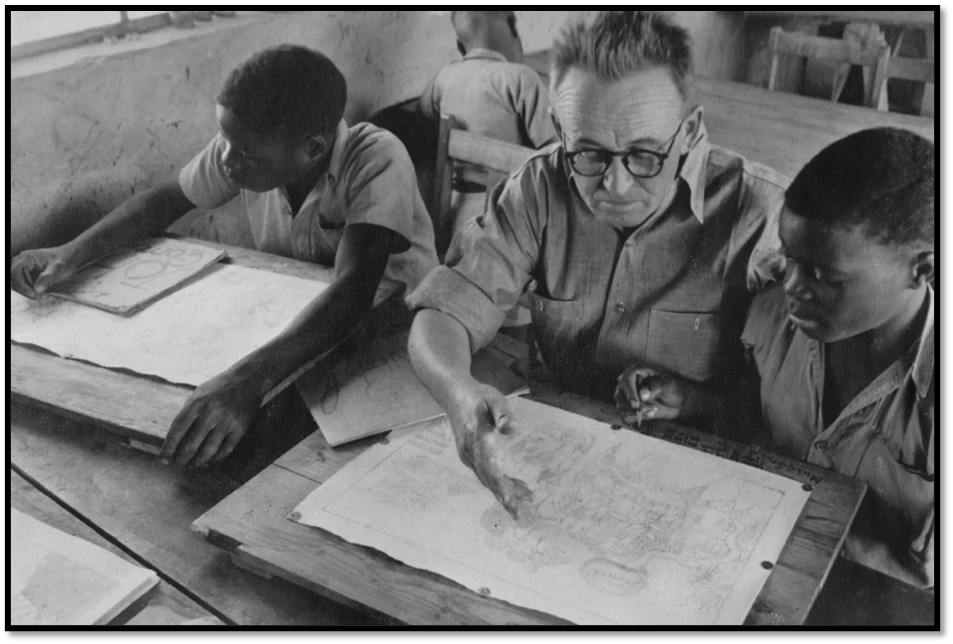
Many of the students had disabilities - above Paterson is pictured with Songo, a quadriplegic who went on to teach art for many years.
Salisbury 1954 – 74
Paterson continued to teach art to African children after his transfer there; first at Chirodzo (1954–61), then Nyarutsetso (1961-68), and later at Farayi Art Centre (1968–74) until his death in 1974.
He had expected to have a role at the new National Gallery that opened in 1957 with many of his pupils exhibiting their work, but he became increasingly marginalized by the National Gallery director, Frank McEwen. There were a number of public disagreements between them and Paterson became shut out of all National Gallery events.
Paterson’s legacy
His legacy is mixed. Jonathan Zilberg maintained that Shona sculpture originated with Paterson, but Randles writes that missionaries stunted the development of artists and Morton states that Paterson’s students typically copied his own limited style, and were never able to get the training they needed to progress technically saying, "Paterson's chief legacy is in tourist art."
Paterson's legacy has had a mixed reception from scholars. Frank McEwen, whose spell as director of the National Gallery highlighted the international response to Zimbabwean art, silenced any discussion of Edward Paterson's influence.
References
Cyrene High School: https://cyrenemission.com/2016/11/08/history/
Cyrene Mission: https://www.facebook.com/media/set/?set=a.695464373851822&type=3
P. Matika. The Herald (Harare) Zimbabwe: Invaders Lay Siege On Cyrene Mission. https://allafrica.com/stories/202510140398.html
S. Vickers. BBC News. 2 Oct 2022. Zimbabwe's treasure trove of lost radical art on display in Harare. https://www.bbc.com/news/world-africa-62231113
When to visit:
Monday to Sunday, 8am to 5pm
Fee:
n/a, but donations welcome
Category:
Province:
